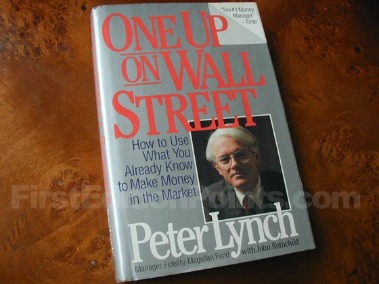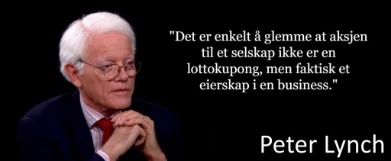One Up On Wall Street
Table of Contents Heading
- Pdf’s Related To One Up On Wall Street: How To Use What You Already Know To Make Money In The Market
- Investment Philosophy
- One Up On Wall Street
- Stocks
- one Up On Wall Street Pdf Summary
- The Six Categories To Consider When Investing In Stocks:
Peter actually goes quite in depth on some of his biggest mistakes which is a really nice touch and takes it away from being overly preachy like a lot of other investment books. as the best investing book out there but in my opinion this trumps it. Peter Lynch’s down to earth approach to investing is very clearly explained and keeps it all very interesting which is no mean feat – investing is a very dry subject.
With this kind of dividend-paying company, we should look at its payout ratio, which shows the percentage of its earnings paid out as dividends. More than 100% is a warning signal as it will not be sustainable; anything below 60% is conservative and more sustainable, in my opinion. The best kind of stock for fast growers are those that not owned by many institutions and are rarely heard – and they do not have a lot of analyst coverage yet.
On-line trading has pressured traditional brokerage houses to reduce commissions and transaction fees, continuing a trend that began with the birth of the discount broker two decades ago. Liking a store, a product, or a restaurant is a good reason to get interested in a company and put it on your research list, but it’s not enough of a reason to own the stock! Never invest in any company before you’ve done the homework on the company’s earnings prospects, financial condition, competitive position, plans for expansion, and so forth. Along with Cisco and Intel, that high-tech juggernaut posted explosive earnings almost from the start. Three years later you could buy a share for under $1, and from there it advanced eightyfold. You didn’t have to be a programmer to notice Microsoft everywhere you looked.
Pdf’s Related To One Up On Wall Street: How To Use What You Already Know To Make Money In The Market
This is investing, where the smart money isn’t so smart, and the dumb money isn’t really as dumb as it thinks. Dumb money is only dumb when it listens to the smart money. Even if October 19 made you nervous about the stock market, you didn’t have to sell that day—or even the next. You could gradually have reduced your portfolio of stocks and come out ahead of the panic-sellers, because, starting in December, the market rose steadily.
(If a $50 stock pays a $5 dividend, it yields 10 percent; when the stock price hits $100, it yields 5 percent.) Meanwhile companies aren’t boosting their dividends the way they once did. On the following page I also mention the bloated 500 times earnings shareholders paid for Ross Perot’s Electronic Data Systems.
Investment Philosophy
It’s a really refreshing take on investing in equities, there’s not a huge amount on formulae and statistical methods. The main focus is really on helping you set up the right mindset with which to invest.
The book, One up on Wall Street, was written by Rothchild and Lynch, first published in 1989. The newer published one on the market also has the same number of pages. Among his famous books, A fool and his money, The bear Book, Going For Broke, One up on Wall Street are the most popular ones. The book has so many real-life experiences as an example that will make you feel why didn’t you read this earlier.
One Up On Wall Street
That said, investors should review a company’s financial position to understand the story of their companies. The perfect book for anyone new to buying stocks, a very common sense approach to investing. It’s a great book to get some insights into one of the greatest investors of the last 20 years. Peters approach is very hands on, doing research on the ground and using knowledge that’s available to you as an individual. I developed a passion for making ten times my money early in my investing career. The first stock I ever bought, Flying Tiger Airlines, turned out to be a multibagger that put me through graduate school. In the last decade the occasional five- and tenbagger, and the rarer twentybagger, has helped my fund outgain the competition—and I own 1,400 stocks.
Otherwise, I work part-time at Fidelity as a fund trustee and as an adviser/trainer for young research analysts. Lately my leisure time is up at least thirtyfold, as I spend more time with my family at home and abroad. More than $4 trillion of that new wealth is invested in mutual funds, up from $275 billion in 1989. The fund bonanza is okay by me, since I managed a fund. But it also must mean a lot of amateur stockpickers did poorly with their picks. If they’d done better on their own in this mother of all bull markets, they wouldn’t have migrated to funds to the extent they have. Perhaps the information contained in this book will set some errant stockpickers on a more profitable path.
This is a lovely book written by a very polite and engaging character, full of beautiful anecdotes and sound advice. Peter Lynch was born on January 19, 1944, and is an American investor, mutual fund manager, and philanthropist. He has also authored many books and papers on investing and has compiled many well-known mantras for modern investment strategies, such as investing in the know-how and ten baggers. Lynch is often described as “mythical” by the financial media for his record of operations and was cited as “a myth” by Jason Zweig. Peter Lynch feels that investing is an art and that attempts to quantify everything rigidly can become a disadvantage.

The second reason is that if such a company still wants to push for higher growth for a few more years, it might have to infuse more capital in the business. “Growth for the sake of growth is the ideology of the cancer cell,” goes a famous saying. In the same way, companies that are growing at rates of % annually must be looked at with suspicion. Consider the size of a company if you expect it to profit from a specific product.
Stocks
I left Magellan in May, 1990, and pundits said it was a brilliant move. They congratulated me for getting out at the right time — just before the collapse of the great bull market. The country’s major banks flirted with insolvency, and a few went belly up. Stocks suffered one of their worst declines in recent memory. But then the war was won, the banking system survived, and stocks rebounded. As a fund manager, the author has categorized stocks for investments in six categories.
Common sense, patience, self-reliance, pain tolerance, open-mindedness, detachment, persistence, flexibility, humility and independence are invaluable traits for successful investors. The ability to admit mistakes, ignore general panic, make decisions without perfect or complete information, and resist your ‘gut feelings’ are important as well. When there is a lot of good news and many investors feel confident, the risk of economic under-performance is likely to be higher. We tend to prepare more for the last thing that has happened rather than what might happen next. The second bargain opportunity is a market collapse or freefall. In both the first and second bargain, margin players and margin calls may lead to even greater sales of cheap stocks. Peter Lynch typically devotes several hours to development of a company’s script and checks his story every few months.
Two hours with The Little Book That Beats the Market will. He provides a “magic formula” that is easy to use and makes buying good companies at bargain prices automatic. Though the formula has been extensively tested and is a breakthrough in the academic and professional world, Greenblatt explains it using 6th grade math, plain language and humor.
- And these companies tend to have a better valuation because they are usually not trading at a premium – due to a lack of analyst coverage.
- So now, let me tell you how much Peter Lynch believes in the power of “independent investment research” in the success of an investor.
- You can read books purchased on Google Play using your computer’s web browser.
These new industries spawned new companies, only a few of which survived to dominate the field. A big name or two will capture the territory, the way McDonald’s did with burgers or Schlumberger did with oil services.
One Up On Wall Street is the friendliest and most approachable book on investing I’ve read. It’s a mix of general investing philosophy, personal anecdotes and specific strategies for choosing, buying and selling stocks. Peter Lynch writes about his frequent missteps with regret but also the humor and perspective of one who has learned from his mistakes. Many investing books are written by authors who present themselves as ingenious laser-visioned mavericks. She has worked in the market since her graduation days. As such, he sees stocks as straightforward and simple. Like Warren Buffett, he is a regular investor who finds neglected firms in the fields of nuts and bolts.
one Up On Wall Street Pdf Summary
And you have touched the right chord by stressing on the need to do independent research before buying stocks. This is what separates the 1% successful investors from the 99% who lay the blame for their losses on others.
Lynch offers easy-to-follow advice for sorting out the long shots from the no-shots by reviewing a company’s financial statements and knowing which numbers really count. He offers guidelines for investing in cyclical, turnaround, and fast-growing companies.
In 1972 the stock was bid up to a precarious 50 times earnings. With no way to “live up to these expectations,” the price fell from $75 to $25, a great buying opportunity at a “more realistic” 13 times earnings. I am not an investment person or try to invest my money in any stocks.

But when asked what exactly is the fundamentals of investing, all you get is a friendly slap on the back and the topic diverts. These examples are abundand and are godly for the novice investor to get the nuts and.bolts on how the stock market works. The best book on stocks and markets anyone can get their hands on. The book gives Wonderful insights into studying diferent businesses and then going after stocks. Easy Read and Interesting examples makes this book, one of the pioneers in this field of study.
He talks about his past, his victories, and some of his failures. He describes everything that happened in an easy way to read. Anyone, including non-financial folks, can understand this.
You should search for companies that perform well, even if they are not popular. As you can see, just by paying attention to the companies we use every day we can discover good investment opportunities. He invested in Taco Bell because he really liked its tacos, and he saw that the shops were always crowded.
The way in which these men and women took advantage of great business opportunities turned their lives and companies around and into some of the top corporations in the world! For anyone looking for insight into how to become a successful CEO, this is a must-have book.

